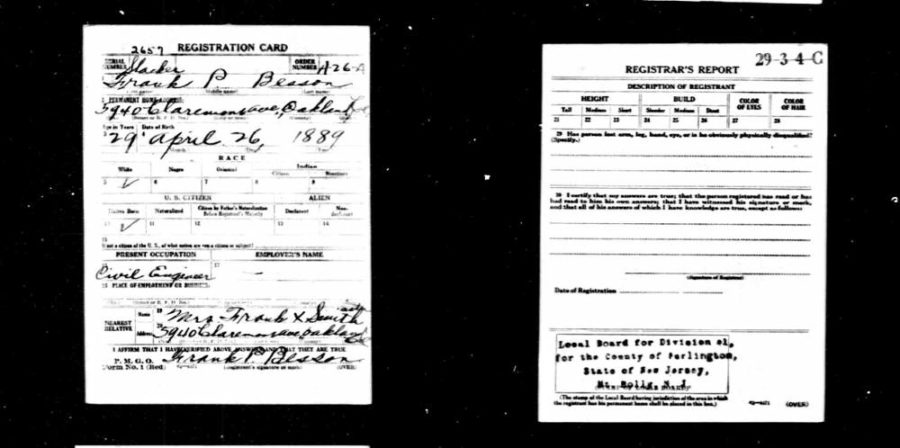Researching families named Brown and Williams is easier than gearing up to go after questions about one of the multitude of Smith families, unless and until there is a ton of background information. The more information you collect about a Smith family prior to research, or all families for that matter, the better off you are. Parents, siblings, cousins, economic factors, specific dates, jobs, addresses, every little bit helps to differentiate families with the same first and last names. There was a question about the Frank Besson family in Louisville with a little bit of family information and the 1930 census record showing the family in Louisville, living next to his wife’s sister. Besson is a good surname to research, fairly uncommon; short – two syllables, it soundexes well, the handwriting to typing problems are minimal – Besson to Bessom. It shouldn’t have been quite so difficult, however, Frank was an elusive man.
Frank Philip Besson
Even though the family story was Frank Besson fought for Canada in World War I, the United States Draft Registration cards were a big help.
- Verification his middle name was Philip.
- Two different sources list his birthdate as 26 April 1889.

With the help from the question about who to contact, the nearest relative question, I could untangle a Smith question by using a brother-in-law’s World War I Draft Registration. Frank had used his sister Mrs Frank Smith a.k.a. Laura (Besson) Smith as the name of the relative who would always be able to reach him on one of the card. It gave her name and address in 1917, identifying her in a place and time that allows 1920 census and city directory research to solidify her in the grand scheme of Smiths. On the other card, he listed his father Philip Besson.

There are several ways to access the information for Draft Registration.
The first and free source, is FamilySearch available throught the church of Latter Day Saints.
Enter Paul Smeck into the first names box and last name box.
On the right is a column with ideas to refine the search, hit the tab labeled COLLECTIONS. There will be a drop down chart (on the side) with five choices, choose MILITARY.
Most searches balance serendipity and expediency. More parameters and the results will be narrowed down to one or two hits. Use fewer parameters and the search may include more hits including some you knew nothing about. Either way you find Paul Raymond Smeck’s WWII Draft Registration Card and if you don’t narrow your search to military, you also find other records for the same man.
The second, is a paid source, through Ancestry’s main search. Use the full name as you know it, best guess on a birth year and for the drop down ANY EVENT choose the last one MILITARY.

At that point, enter the data and get another screen; on the left narrow it down by category, choose military again. On the right, the fifth and sixth choices are WWI Draft Registration and WWII Draft Registration. By narrowing down on the left side, you specifically will be using the World War I file for research. By choosing on the right you can check the WWI file and then back out and check the World War II file. Continue in the Military section, if you want to run 20 men through the WWI file. Back out and use the entire file, if you want to research the specific man further. Again expediency vs. serendipity.
These links work only if you have an Ancestry account. Periodically, there are free trial offers and many local libraries have Ancestry as an in-house database available inside the library.
It makes sense to get an account if:
- Your best research time is when the library is closed.
- You want to research online every day.
- Your research budget can absorb it.
- Someone wants to give you a great present.









